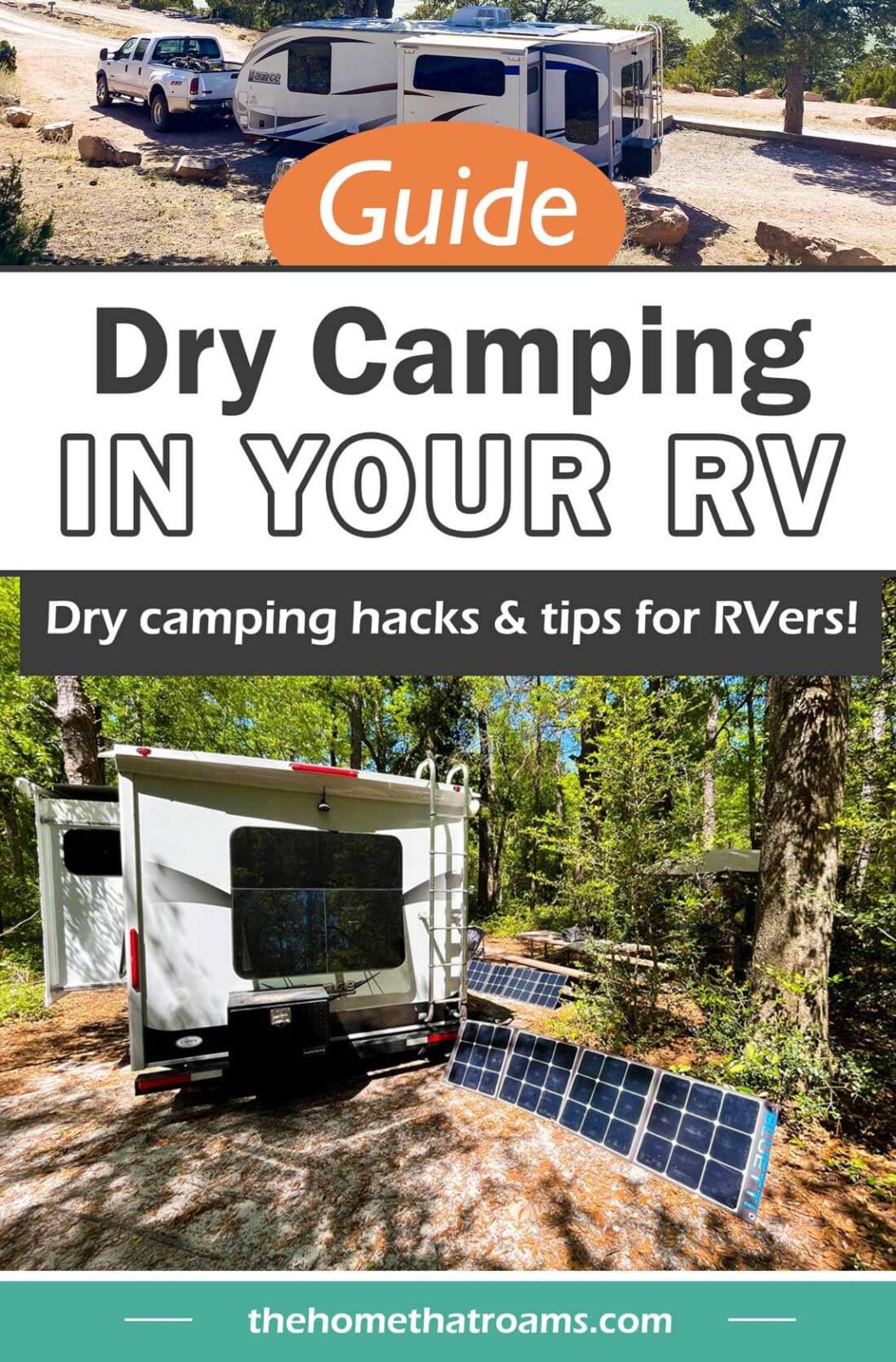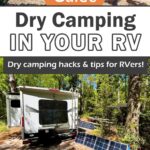7 Helpful Tips for Dry Camping in an RV
As an Amazon Associate, we earn from qualifying purchases. We also earn from other affiliate websites. See our full disclaimer.
If you’ve heard the term “dry camping” tossed around the RV community but aren’t sure exactly what it means, you’re in the right spot!
Dry camping is a great way to save a little money on RV campsites while opening up more opportunities for camping spots on the road. Many dry camping spots will also allow you to get further out in nature at more remote locations. Dry camping is by far our preferred way to camp!
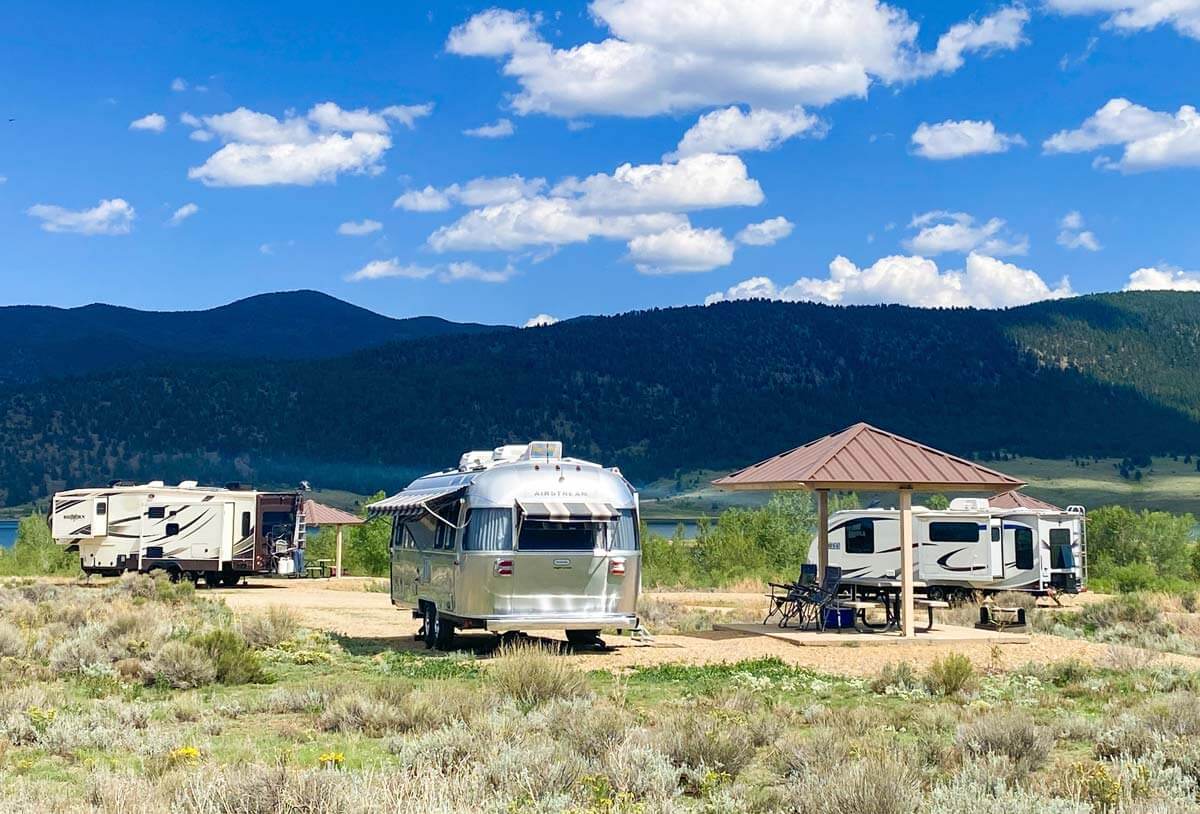
In this article, we’ll cover the dry camping meaning, boondocking meaning (which is a bit different), and our favorite tips and hacks for succeeding on your first RV dry camping trip.
What is Dry Camping in an RV?
Let’s jump in with the dry camping definition.
Dry camping refers to camping without any utility hookups such as electricity, water, or sewage. This can be done in various locations, including public lands, campgrounds, or state parks with no hookups (sometimes called ‘primitive campsites’), parking lots, or your own private property.
Dry Camping vs. Boondocking
When you boondock in your RV, you are technically dry camping, but dry camping in your RV isn’t necessarily boondocking.
Let’s look at this a little closer.
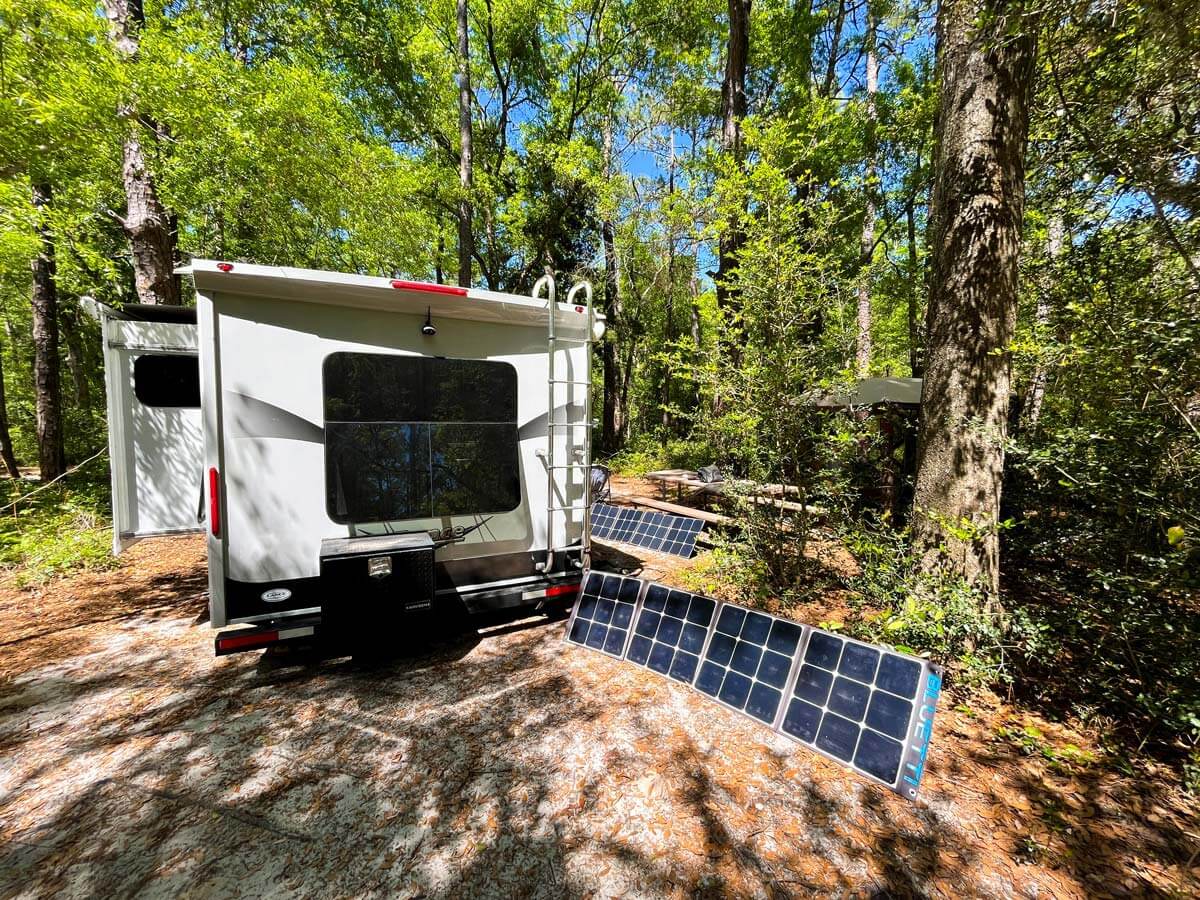
When you’re dry camping, you are camping without hookups (water, power, and sewer connection). However, you can dry camp in state parks (see above image) or national forest campgrounds, at a Harvest Hosts’ location, while moochdocking on private land, or in a Cracker Barrel parking lot.
These differ from camping on BLM (Bureau of Land Management) public lands, which you will generally see described as RV boondocking or dispersed camping. Boondocking is always a free camping option whereas you could still be charged a fee to dry camp.
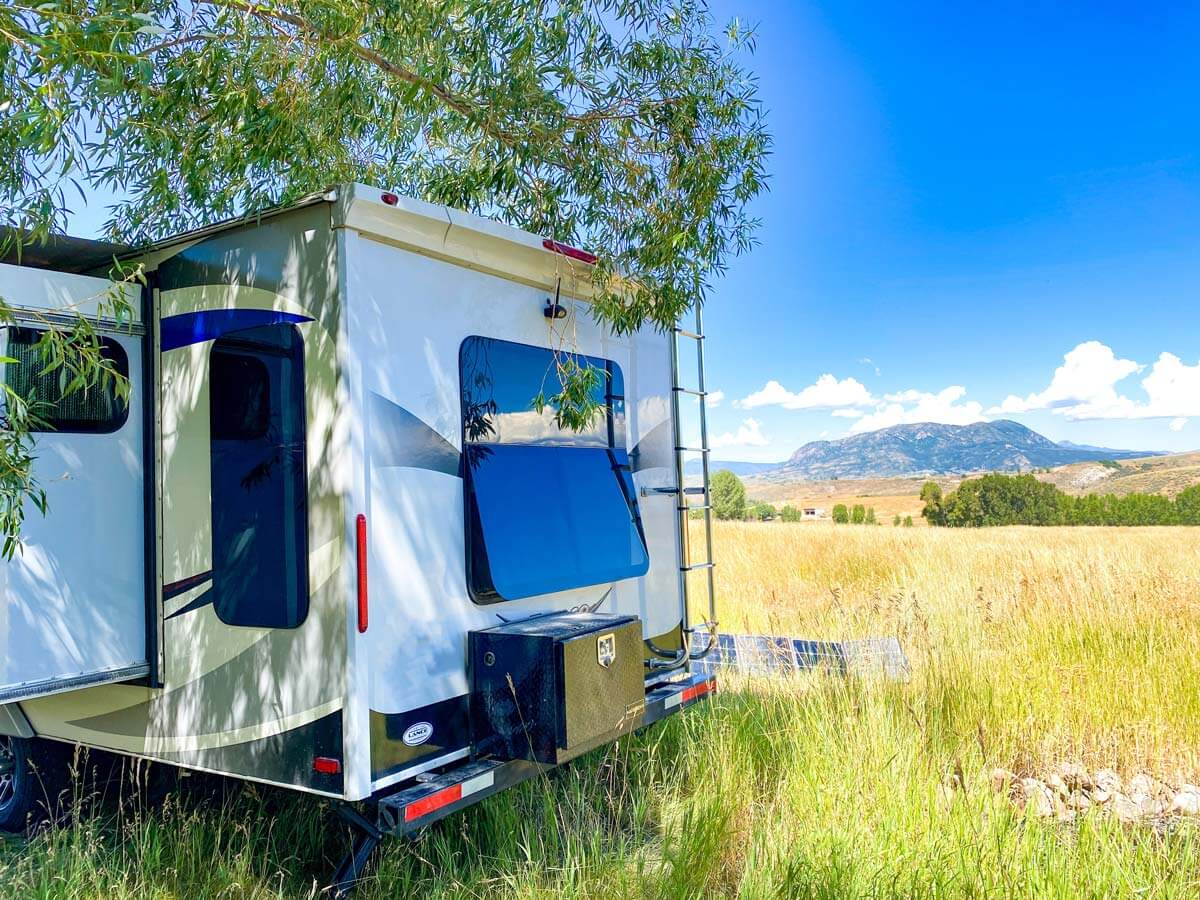
Boondocking is typically done in remote areas such as deserts, forests, or beaches where campers can experience the rawness of nature without the convenience of modern amenities.
You may also hear boondocking referred to as dispersed camping or wild camping.
What is a Dry Camping Campsite?
Dry campsites are typically the same as a full hookup site, just without the hookups (electrical connection, water source, or sewer connection).
A dry campsite will still be a marked site with a picnic table, fire ring, shelter, etc., just like the other sites in the campground or camping area.
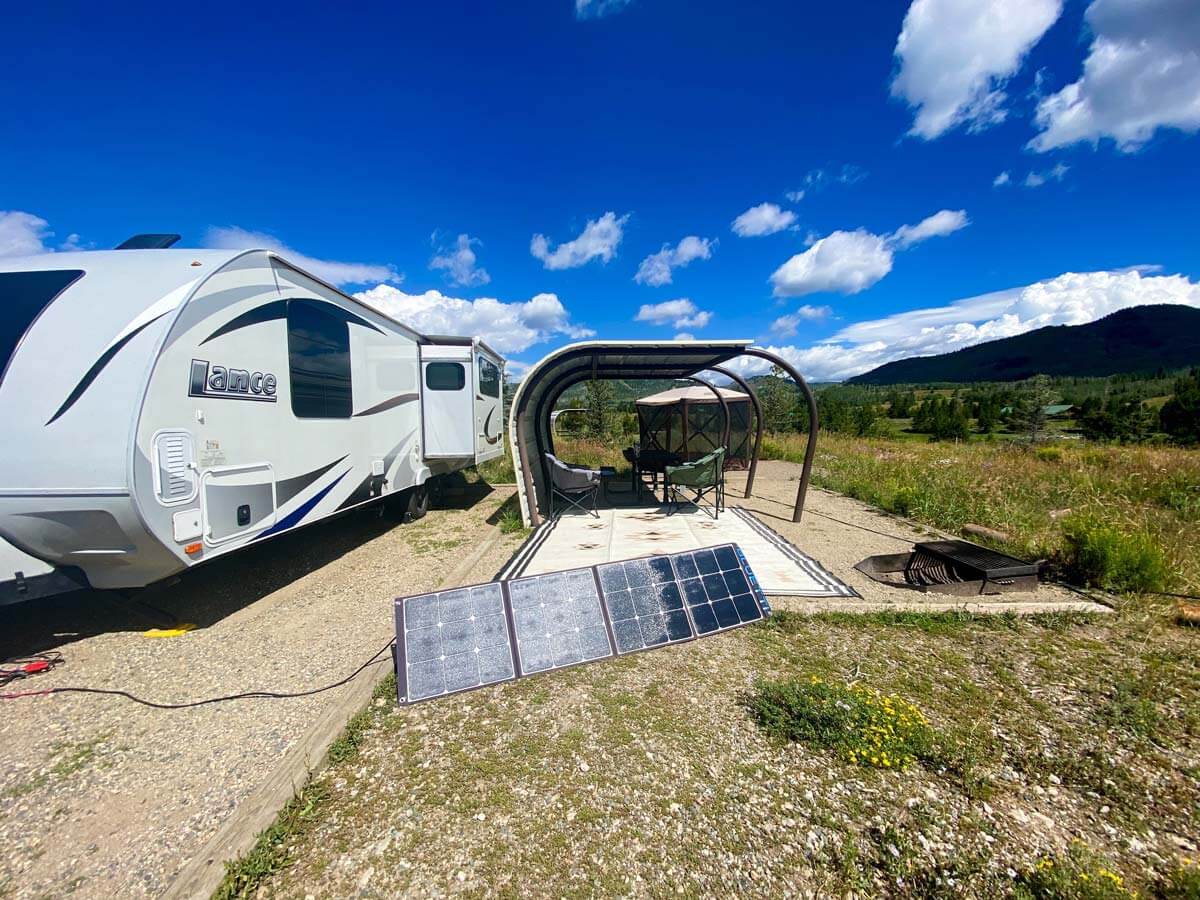
Dry campsites are typically cheaper than the hookup sites at the campground. You’ll generally find more options for dry campsites at state parks, national forests, and national park campgrounds.
Sometimes dry camping will be the only option for more remote places.
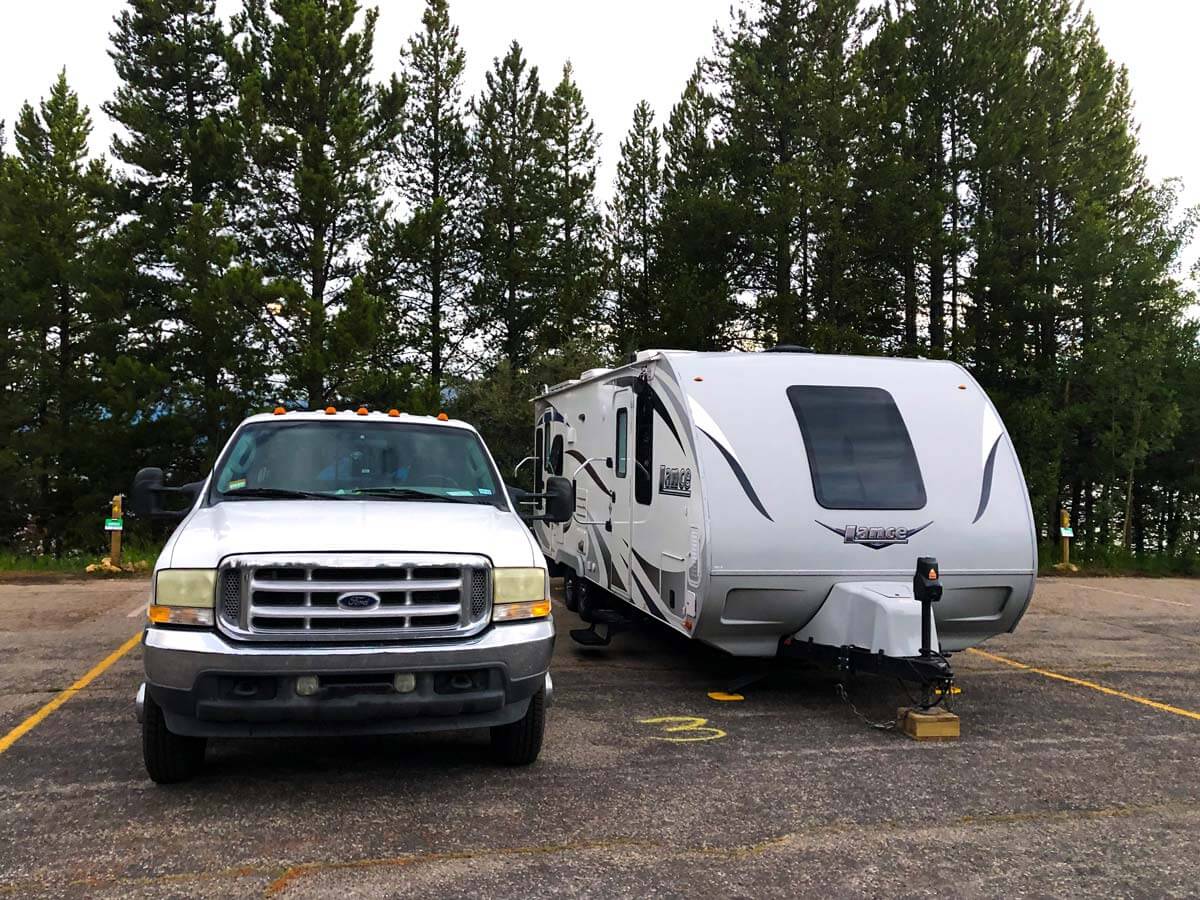
For example, we’ve dry camped at state parks in New Mexico with no hookup sites available. We’ve also dry camped at a national forest in Colorado, where the camping spots closest to the lake were just marked spaces in a parking lot (see photo above).
7 RV Dry Camping Tips
Dry camping in an RV can be a great way to save money on your camping trip. It allows you to take advantage of free overnight camping spots or camp in more natural areas without many amenities.
However, it is essential to be prepared before you head out on a dry camping adventure in your RV. Here are some dry camping tips, as well as things to consider before heading out on your RV trip.
1. Conserve Fresh Water
One of the most important things to keep in mind when dry camping is your fresh water tank. Make sure you know the size of your water tank as well. Generally, the bigger the RV, the bigger the tank.
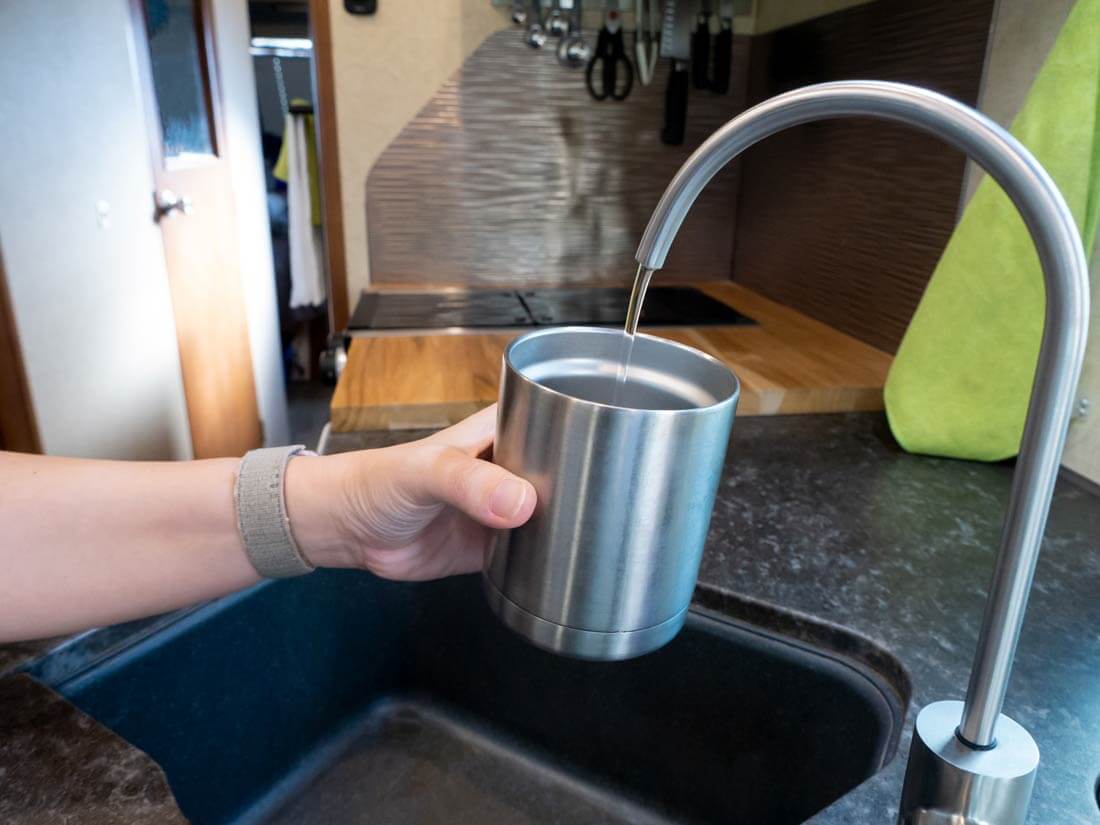
Since you won’t have access to a water hookup, you’ll need to be extra careful with your water use. Arrive at your dry camping site with a full fresh water tank, if possible. However, many dry camping spots in campgrounds might have a potable water spigot nearby. At these campgrounds, you can fill your tank on arrival.
When washing dishes, showering, washing your hands, etc., don’t let the water just run, turn it off when you’re not actively using it, and try not to run it on full blast. Using a minimal amount of water takes practice!
PRO TIP: We use 5-gallon collapsible water totes and a transfer pump to refill our fresh water tank when dry camping for long periods.
2. Monitor Your Black Water Tank
RVs are required to be self-contained when dry camping. This means your RV can function independently of any hookups. This includes holding tanks on board for fresh water, grey water, and black water.
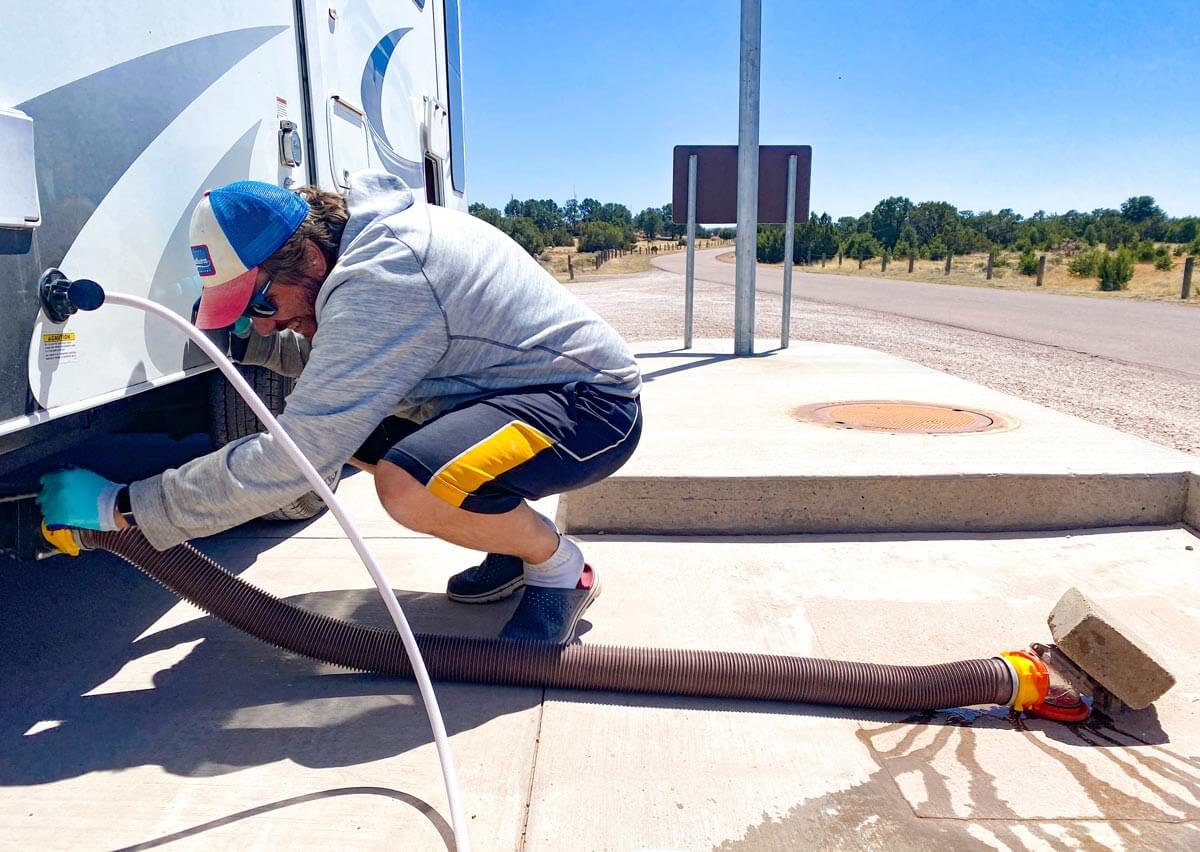
Since you won’t have access to a sewer hookup, you’ll need to monitor how much waste you’re putting into your black tank. Black tanks are typically only plumbed to the RV toilet, but some bathroom sinks will also run to the black tank, so make sure you know how your RV is configured.
If you are in a custom RV or camper van and don’t have a black tank, you can also contain waste with a cassette or composting toilets.
If you’re dry camping at a campground or state park, there will most likely be campground bathroom facilities to minimize the usage of your black tank.
Some popular national forests and even boondocking locations will also have vault toilets in camping areas. These are anything but fancy, but they will allow you to stretch out the time you can dry camp!
If you’re boondocking in remote locations, you can also opt to pee outside to save space in the black tank.
3. Monitor Your Grey Water Tank
Your grey tank capacity is something that can quickly run out when you’re dry camping.
Washing dishes, brushing your teeth, and showering will all fill your grey tank with water. We make a few major adjustments when dry camping to minimize how much water we put in the grey tank.
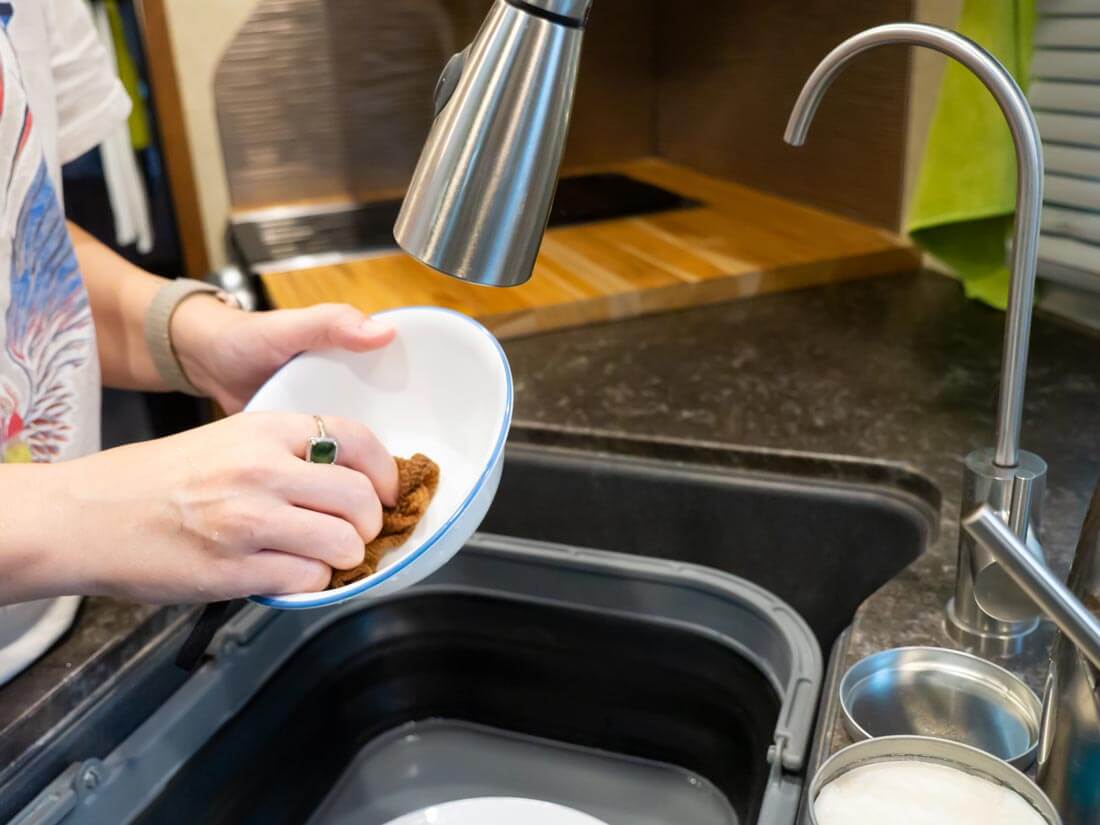
Showering
Taking a normal shower is one of the quickest ways to fill your grey tank. When we shower, we take a “navy shower, ” meaning we only run the water to wet down and soap up. If we’re trying to stretch our dry camping trip, we’ll stand in a collapsible bin in the shower and try to catch as much of the water as possible. Then we’ll toss it out.
Washing Dishes
Similar to showering, we use a collapsible bin in the kitchen sink to catch grey water. This allows us to use less water and toss it out instead of adding it to the holding tank.
PRO TIP: When tossing out dish or shower water from your RV, make sure you use a minimal amount of natural soap or national products to avoid harming the surrounding environment.
4. Stock Up on Propane
Since you won’t have unlimited electricity while dry camping, you’ll want a full propane tank to run your RV stove and oven, your 2-way propane fueled RV fridge (if you have one), and a ducted RV heater if you’re camping on cold nights.
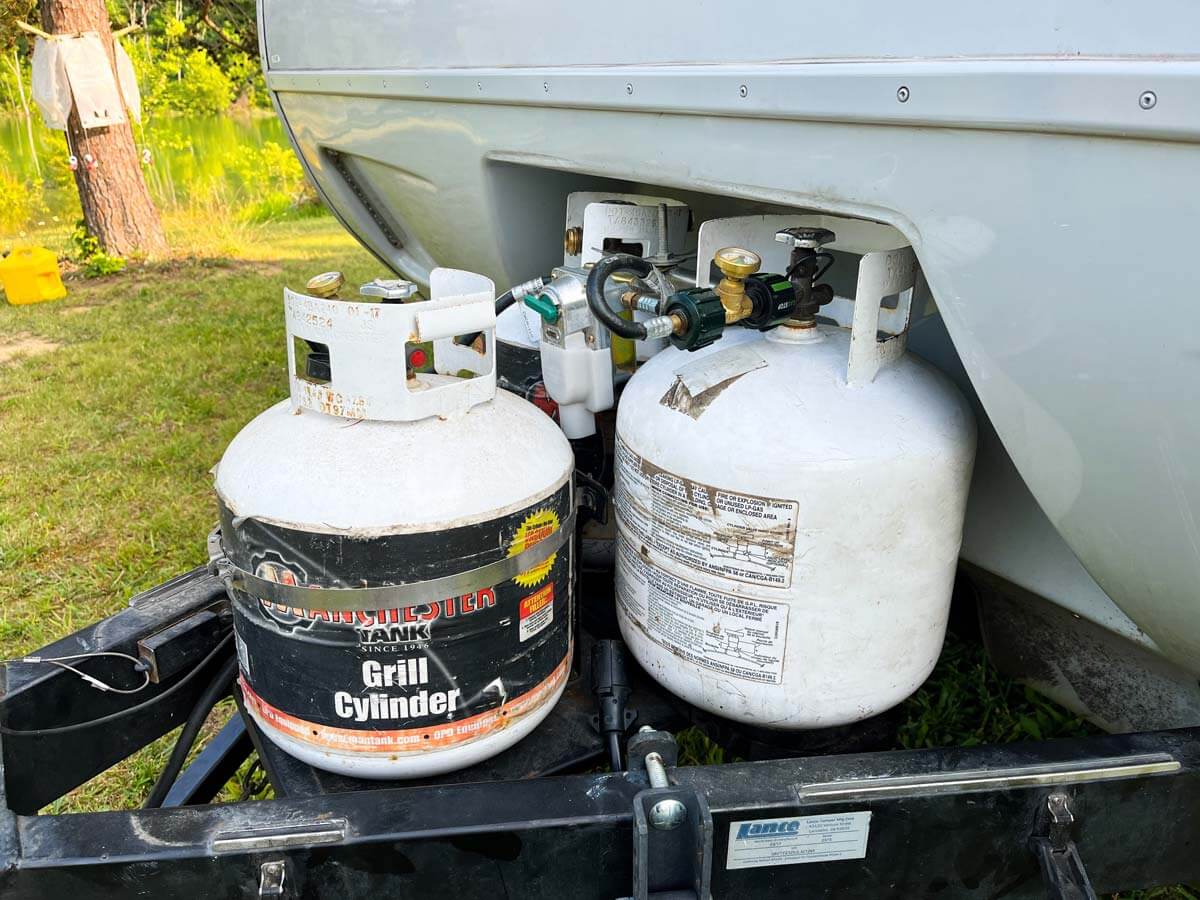
RV fridges and stoves are very efficient with propane usage, but your heater will burn through it fast. To save on propane, bring a down blanket or sleeping bag to snuggle up under at night.
Most RV hot water heaters can be fueled by electricity or propane. When you’re dry camping, you’ll have to use the propane option since it takes a lot of electricity to heat water. If you want to heat hot water for washing dishes or showering, budget propane for these activities too.
5. Manage Your Power Usage
Managing power is another crucial skill RVers need to develop for dry camping.
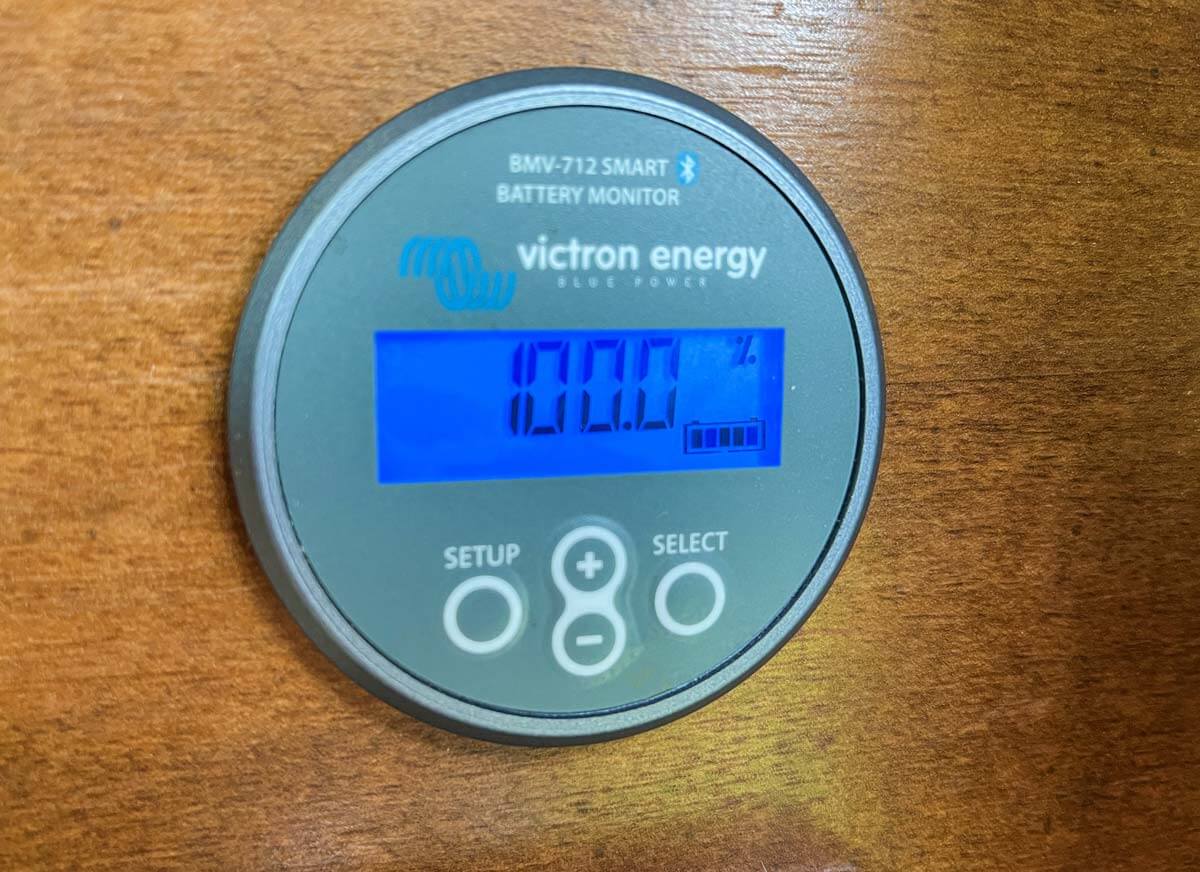
The first thing to know when RV camping without a power connection is everything you run draws power from your house battery or battery bank.
Your RV will only be able to run 12-volt appliances or electronics without an inverter, so no air conditioner, microwave, blender, etc.
Modern RVs come with LED lights that don’t draw much battery power, but make sure to turn them off when not in use to conserve the batteries.
Also, be aware that even though your RV heater runs on propane, the fan takes electricity. This is why portable propane heaters are popular for dry camping.
Try a practice run by dry camping for short stays or just camping in your driveway without hookups to help determine how much power you use. In the next section, we’ll talk more about how to recharge your batteries while dry camping.
Charging Electronics
Many RVs will have USB ports built into the RV for electronics such as phones and tablets. There might also be DC or 12-volt outlets where you can plug in an adapter. For dry campers who just want to charge a laptop, some laptops will have a DC charger cable you can purchase.
You can also get a portable power bank to charge USB electronics.
6. Add Solar Power and/or a Generator
If you want to dry camp for multiple days or weeks, installing a solar setup in your RV will be very helpful. Permanent solar panels installed on the roof or portable solar panels that you can set up outside the RV both provide an easy solution for charging your RV batteries.
If you need to power 120V AC items, consider adding an inverter or solar generator to your setup.
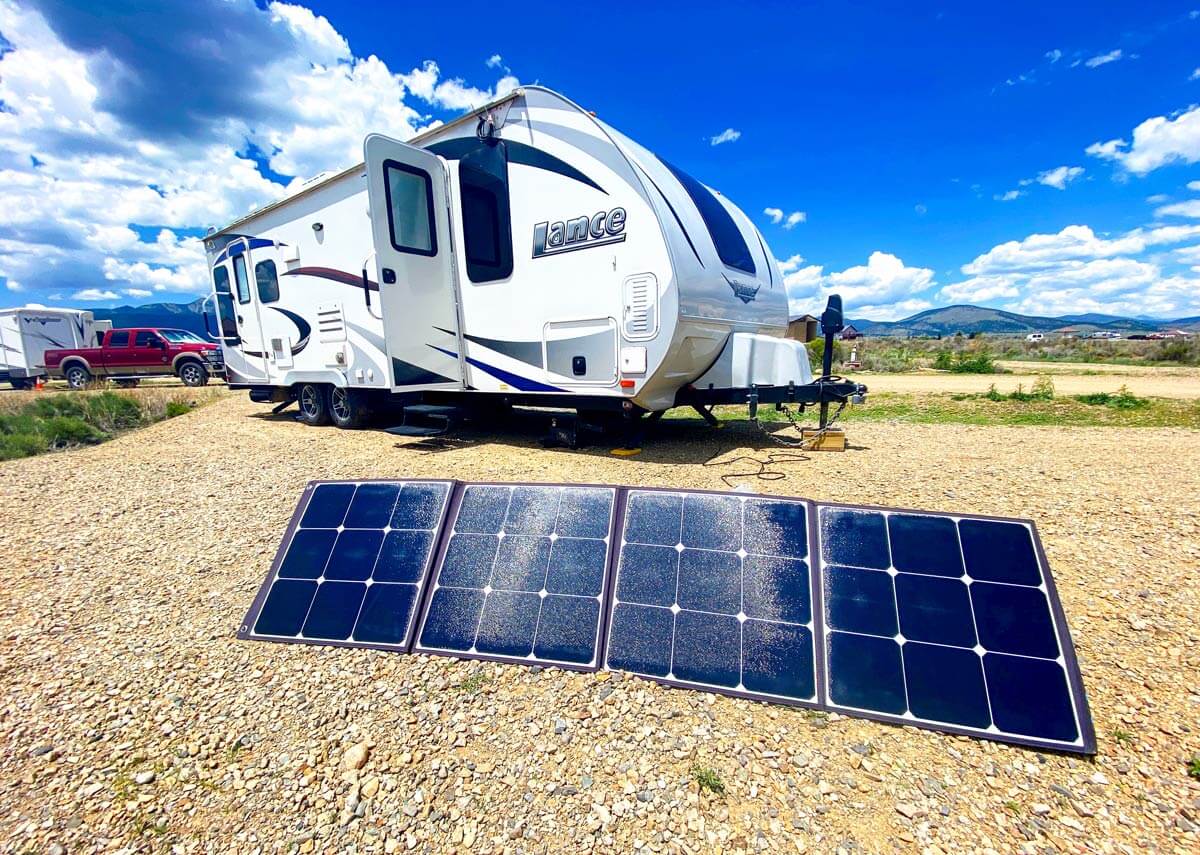
You may also want to consider a gas generator, especially if you’re camping in warm areas and want to run the AC. Most motorhomes and even some toy haulers will come equipped with a generator onboard, but other RVs, such as travel trailers and fifth wheels, will most likely require you to purchase one. Both Yamaha and Honda have great lines of portable generators.
Tips for Running a Gas Generator
If you use a generator, remember to use it only during designated hours (typically between 6am and 10pm at campgrounds) and be considerate of your neighbors.
Open frame generators are especially noisy. If you’re in close proximity to your neighbors, avoid running this type of generator if possible, they tend to kill the natural vibe of remote camping spots.
NOTE: If you’re staying overnight at a business such as a Walmart parking lot or Cracker Barrel, as a rule of thumb, you shouldn’t run your generator.
7. Monitor and Control RV Temperature
One of the most challenging parts of dry camping is maintaining a comfortable temperature inside your RV, especially in hot locations.
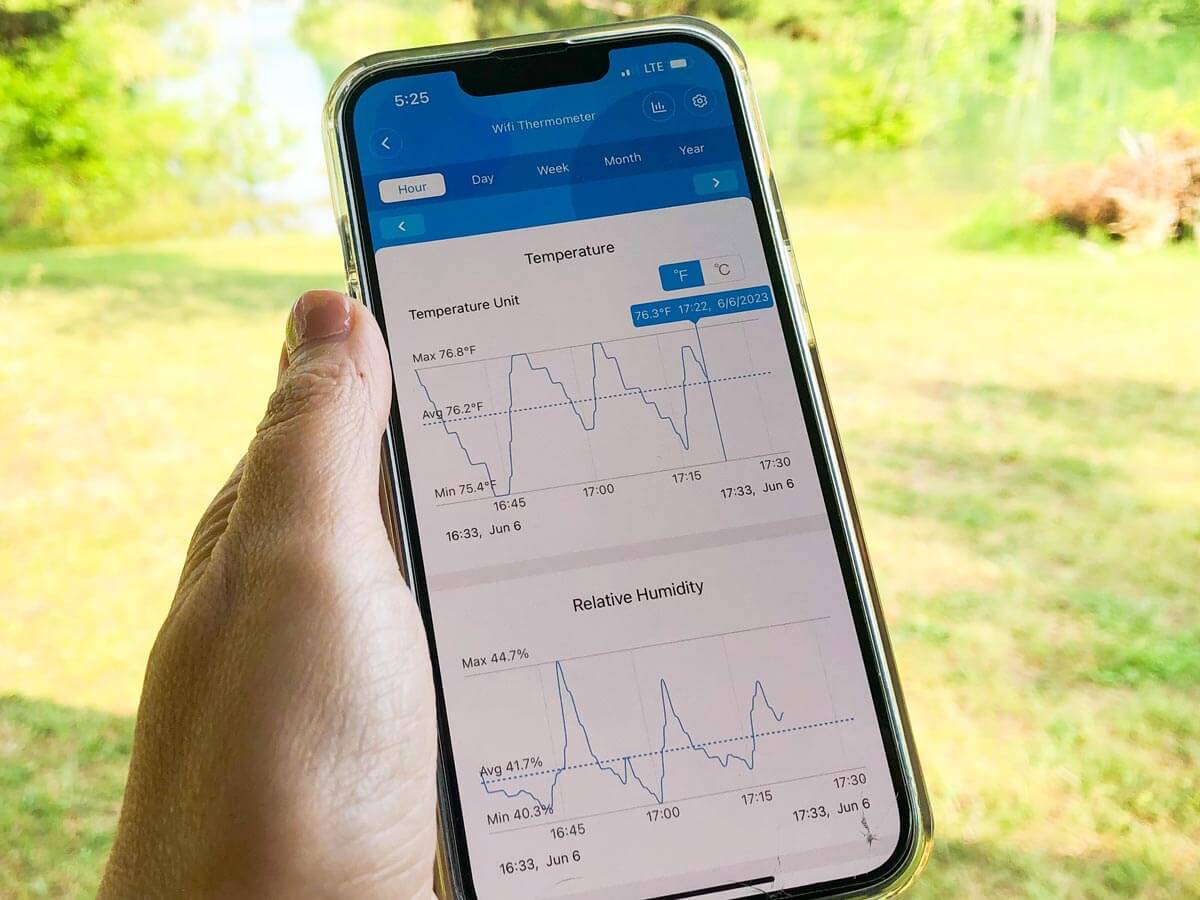
But whether you’re camping in hot or cold temperatures, below are a few tips for managing dry camping in these weather conditions.
Tips to help keep the heat out of your RV:
- Upgrade your fans to Maxx fans to improve airflow
- Install Reflectix on windows that face the afternoon sun, as an affordable way to help keep your RV cool
- When possible, park with your awning facing the afternoon sun so you can shade the RV with your awning.
- Cook outside to eliminate heat from the RV stove or oven
Tips to help keep your RV warm:
- Install skylight or vent covers
- If you’re shopping for an RV, consider purchasing an RV with a 4-season package
RV Dry Camping with Pets in Hot Climates
If you have pets, make sure to monitor the temperature in the RV when you’re away.
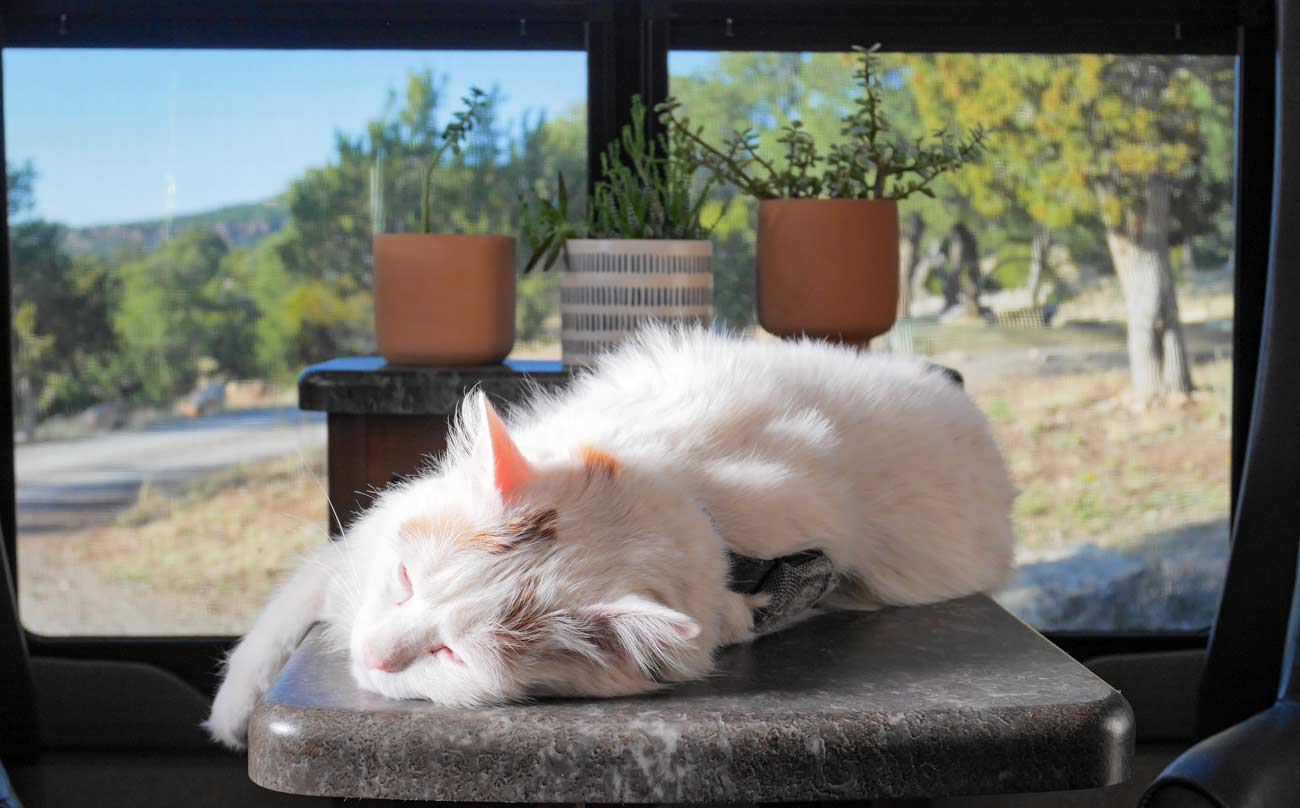
Some monitoring devices can be hooked up to your RV network (if you have one) and accessed via your phone when you’re away from your RV. You can also purchase devices with their own separate data phone.
We have details on some different temperature monitoring devices for pets here.
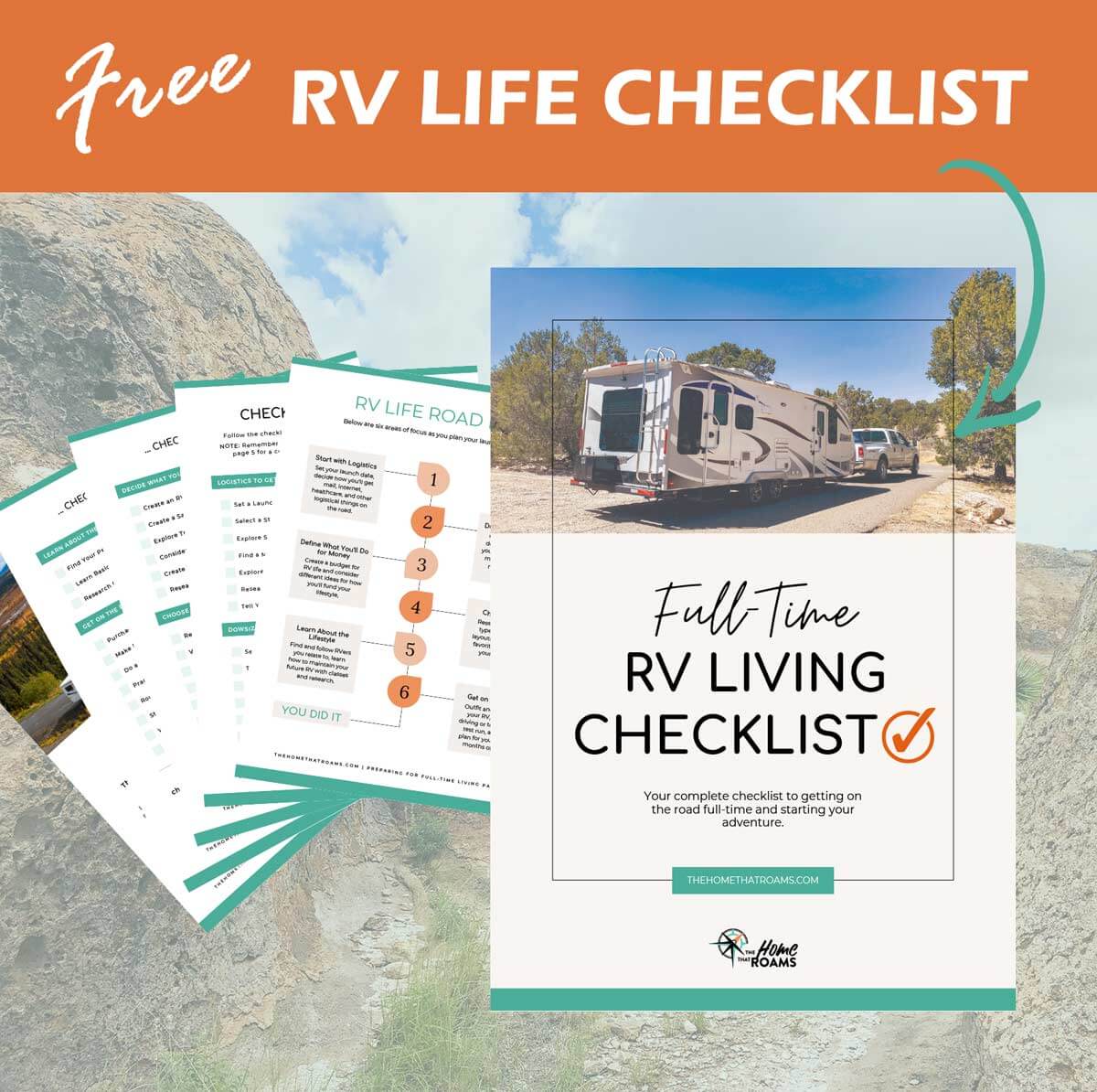
Your Guide to Launching RV Life
Road Map & Checklist – Start Now!
Unsubscribe at any time. View our privacy policy.
Dry Camping for Beginners
If you’re a first-time dry camper, start with shorter RV stays and then stretch your dry camping trips as you become more comfortable managing your resources.
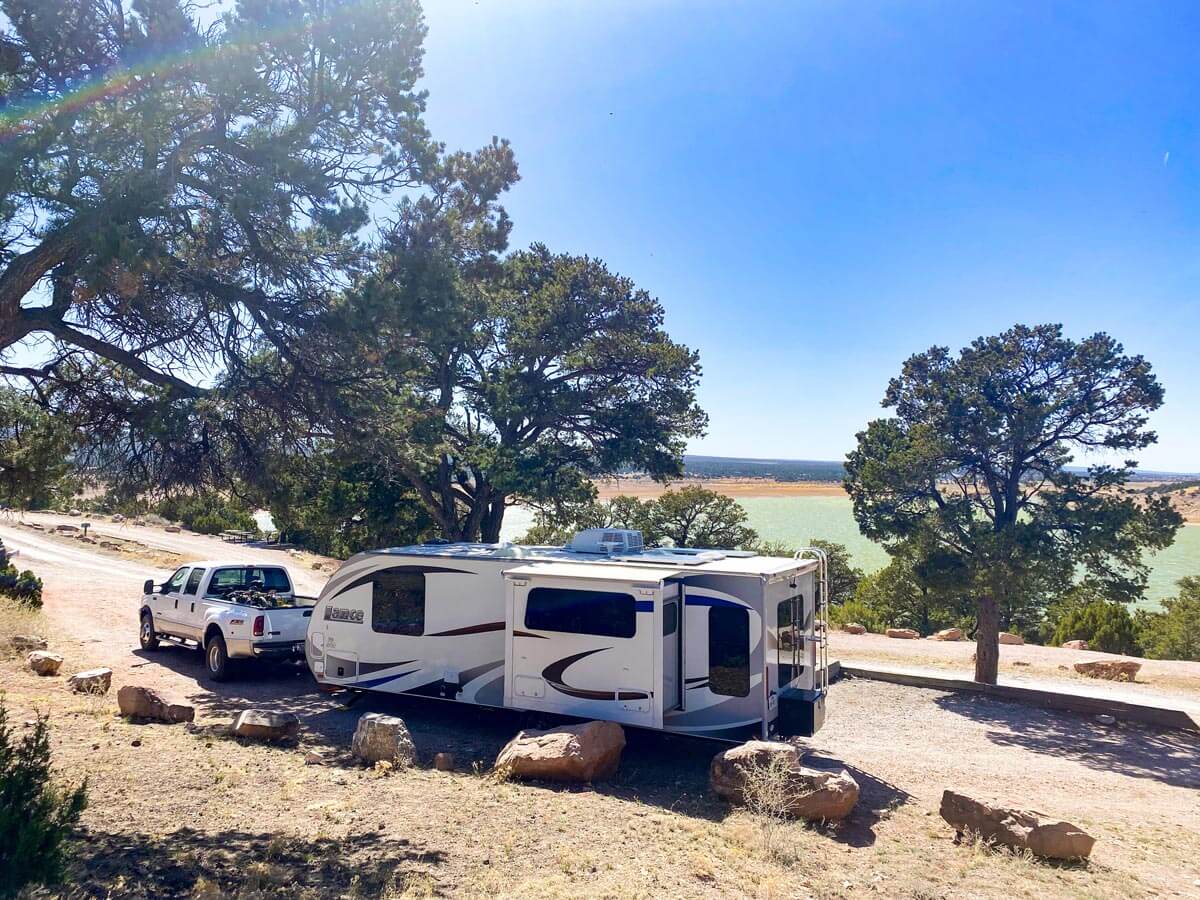
It’ll take a little practice to hone in on how much power and water you need and implement some of the above tips to help you conserve in these areas.
Dry camping in campgrounds is also a great way to take your first steps toward boondocking. So, if you got into RVing to get outdoors and enjoy nature, start dry RV camping today!
Want to learn more about how to RV on a budget?
Find more tips for RV living on the cheap, including finding cheap campsites, saving on fuel costs, and more – view our complete guide.
Like this post? Save it on Pinterest for later.
